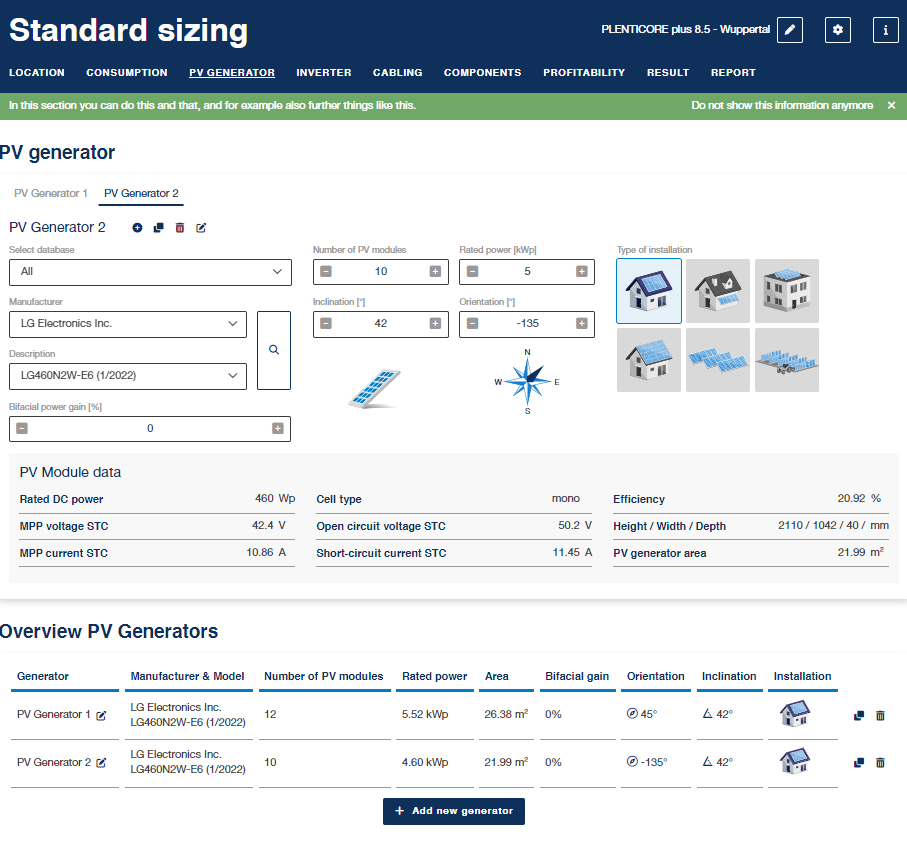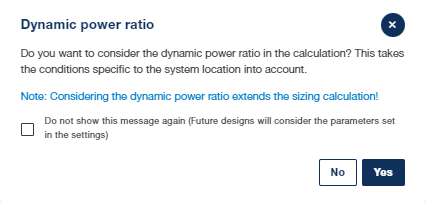Manual planning

You can create up to four PV generators yourself by going to the PV generators menu item. The PV modules are selected from a database.
- Select the database from which you want to select the PV generators.
- Then select the PV module under manufacturer and type.
- If the PV module is a bifacial module, you can enter a percentage for the assumed bifacial power gain.
- Then select the number of modules, the roof incline and the orientation.
The rated output is calculated automatically, but it can be changed. - Select the type of module installation.
- At the bottom you find an overview of the PV-Generators.
- To create more PV generators, repeat the steps by clicking on the (+) symbol at the top or the Add new generator button.
You can change the name of the PV generator by going to Edit (pencil symbol next to the name).
- Click on the right arrow to go to the next page.
Created PV generators
Once created, PV generators can be copied, deleted (bin) or renamed (pencil) using the symbols on the bar or at the top.

Dynamic performance ratio
Depending on the settings configured in the program options for KOSTAL Solar Plan, the dynamic performance ratio calculation is provided here.
When determining the performance ratio, the user can choose between a static and dynamic performance ratio calculation.
The dynamic performance ratio takes into account both the system location and the orientation and inclination of the PV modules, meaning that the performance ratio can be estimated with greater accuracy. This involves checking the maximum power that occurs simultaneously with surfaces with different orientations.
To perform the dynamic calculation, answer the question with Yes.

Please note that it may take several minutes for the layout to be calculated because of the simulation running in the background. If it is taking too long, you can exit the calculation using the Cancel button.
INFO

The performance ratio is the ratio of a PV generator's output power to the power drawn by the associated inverter. This ratio depends on the efficiency at which the inverter is working, i.e. how much of the DC power present is being converted into usable AC power.
The static performance ratio is faster to calculate and uses the PV rated output that can be found in the inverter's technical data.
The dynamic performance ratio takes longer to calculate and is based on the power that can be achieved at the system location.